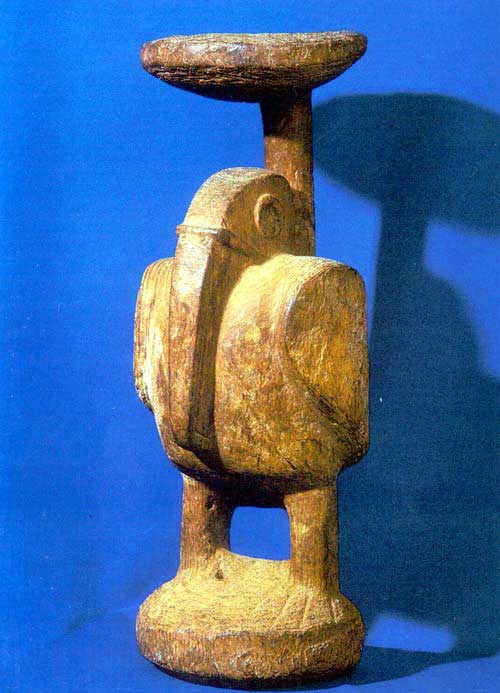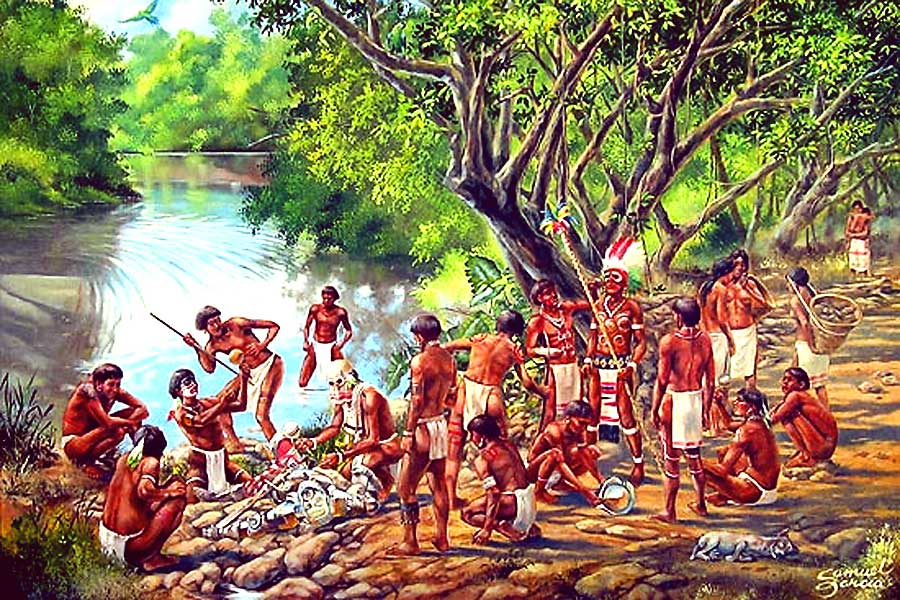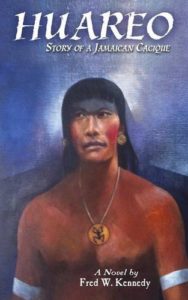Jamaica’s recorded history can be divided into three distinct periods, beginning with the Tainos of Jamaica.
It begins in 1494 with the arrival of Christopher Columbus , the first European known to have set foot on the island and covers the period of Spanish colonization up to 1655.
The start of the second period is marked by the capture of Jamaica from Spain in that year by the British and runs for just over 300 years up to the year 1962 when Jamaica ceased to be a British colony and won political independence.
The third period covers the years from 1962 when the island becomes a sovereign nation up to the present. Our survey goes up top the attainment of Independence in 1962
Pre-History
The period before the arrival of the Europeans is referred to as Jamaica’s pre-history because there are no written records left by the people who inhabited the island at the time. Generations of Jamaican schoolchildren were erroneously taught that Columbus ‘discovered’ Jamaica and that the people he found when he arrived were called Arawaks. Modern day historians point to the fact that because Columbus found people living in a functioning society, Jamaica must have been ‘discovered’ long before he arrived. The Taino Indians , as we now know, came to Jamaica traveling from the South American mainland somewhere between 700-1000 AD. They differed from the original Arawakian peoples of the mainland having developed a distinct Taino language and culture.
Although the Tainos left no written records we know something of their lifestyle, culture and world-view from remains unearthed by archaeologists and markings, tools and other implements, but also from the reports of Columbus himself and from the diaries of the first clerics and other pioneers who came to settle the island during the first decades of Spanish occupation. The Tainos lived in most areas of the island but the majority of their villages were close to the coast and in the neighbourhood of rivers because they were a sea-faring people and lived chiefly off seafood. Physically, they were short, slightly built but a shapely people with a cinnamon-coloured complexion. They grew cassava as a staple crop but also sweet potato, fruits and vegetables for food as well as cotton and tobacco which they smoked as a popular form of pastime. The Jamaican Tainos were skilled in the art of working stone and their implements were well-shaped and beautifully finished. They fashioned their dug-out canoes from the trunks of the cedar and silk cotton trees. These canoes varied in size , some large enough to hold as many as 50 people. Their government was simple but effective; the island was divided into provinces, each ruled by a Cacique assisted by a village headman or sub-chiefs. Caciques were much respected , enjoyed the privilege of polygamy and occupied the best and biggest house in the village. This is where the village idols or Zemis were kept as the Tainos believed in a pantheon of Gods but had no meeting place for formal worship.

The Tainos were said to be mild peaceful and light-hearted and lived a blissful existence until that peaceful existence was first threatened by the warlike Caribs or Kalinagos who inhabited the smaller islands of the Caribbean who had begun to make sporadic raids even before the disastrous encounter with Columbus and the Europeans. Taino population at the time of Columbus’ arrival numbered about 100,000. Within 40 years they were exterminated! The encounter between the Tainos and Columbus is best captured in J.C. Squires’ poem There was an Indian:
There was an Indian, who had known no change,
Who strayed content along a sunlit beach
Gathering shells.He heard a sudden strange
Commingled noise; looked up and gasped for speech
For in the bay, where nothing was before,
Moved by the sea, by magic, huge canoes
With bellying cloths on poles, and not one oar,
And fluttering coloured signs and clambering crews
And he, in fear, this naked man alone,
His fallen hands forgetting all their shells,
His lips gone pale, knelt low behind a stone,
And stared, and saw, and did not understand,
Columbus’ doom-burdened caravels
Slant to the shore, and all their seamen land.
The Tainos Part I – Before the European came, a life of idyll
Paul H. Williams – Go To Article
Read Fred Kennedy’s fictional account of a Taino boy entitled Huararo



